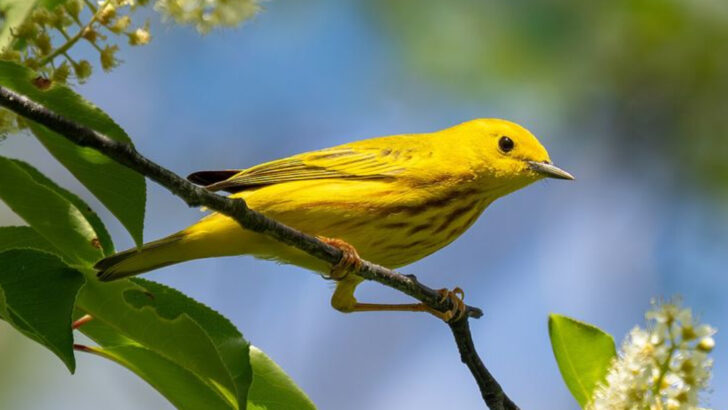Every summer, the skies above North America come alive with winged visitors from thousands of miles away. These aren’t casual fliers—they’re long-distance champions. Dodging storms, predators, and exhaustion, they cross continents just to reach the warm months of the northern hemisphere. Some bring bursts of color to backyards. Others fill forests with songs that haven’t been heard since last summer. And all of them arrive with perfect timing—drawn by instinct, sun patterns, and ancient routes carved into their DNA. This isn’t just birdwatching. It’s a seasonal reunion with some of nature’s most impressive travelers. Meet eight migratory species whose summer return signals something magical: the wild world is still moving, still thriving, and still full of wonder overhead.
Ruby-throated Hummingbird
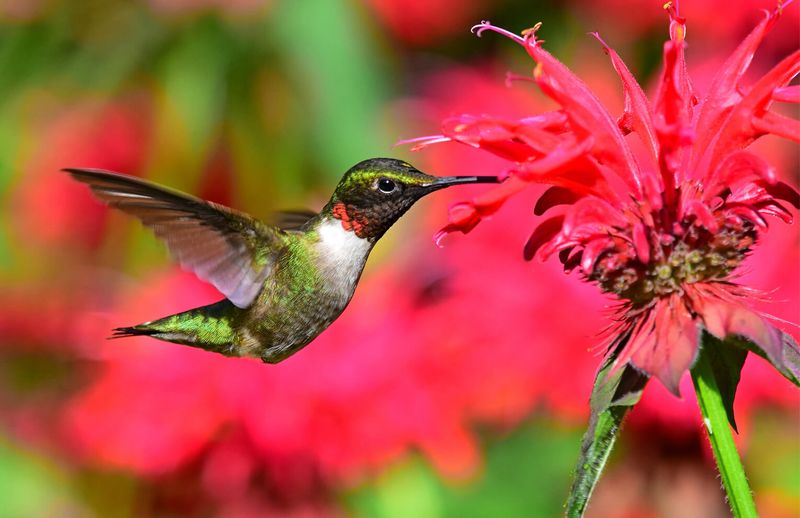
The Ruby-throated Hummingbird is a vibrant jewel of the bird world. With its iridescent green feathers and distinctive red throat, this tiny traveler is a marvel of nature. Weighing less than a penny, these birds make an incredible journey from Central America to North American gardens each summer. Their wings beat rapidly, creating a mesmerizing hum that announces their arrival. Often seen darting between flowers, they are essential pollinators. The tenacity and beauty of these birds never fail to captivate those lucky enough to spot them in their backyard. Truly, a summertime spectacle.
Baltimore Oriole
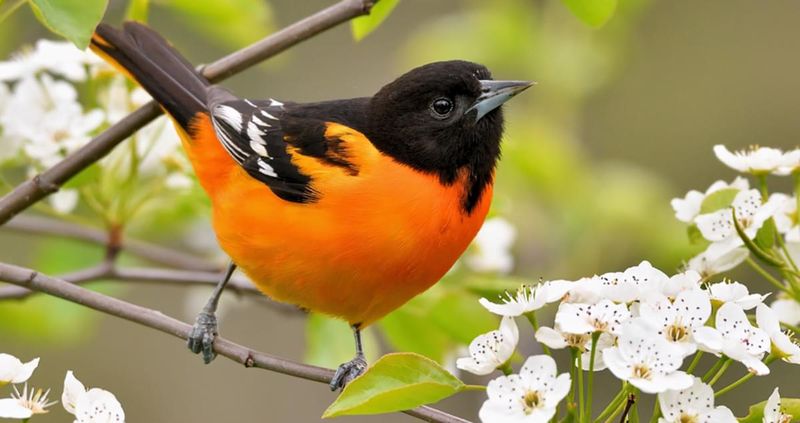
The Baltimore Oriole, with its vivid orange and black plumage, is a welcome sight in North America during the summer. These birds are known for their melodic songs and intricate, hanging nests woven from fibers. Their arrival heralds warmer days, as they feast on insects and nectar. A flash of orange amidst the green leaves, they are a symbol of the season’s vibrancy. Baltimore Orioles are particularly fond of oranges and jelly, making them frequent visitors to backyard feeders. Their cheerful presence adds a splash of color to summer landscapes.
Scarlet Tanager
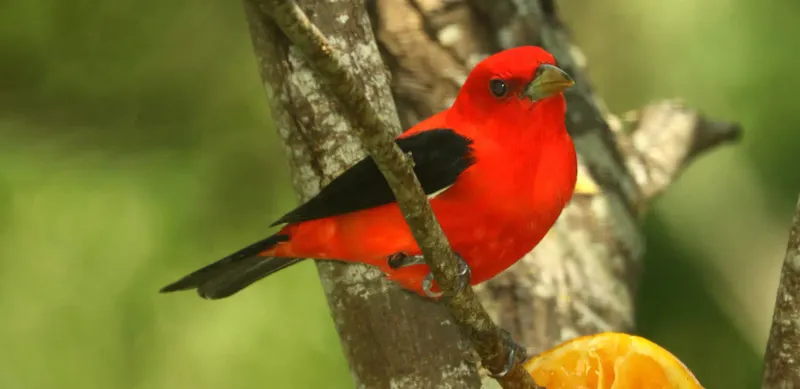
With a plumage as striking as a sunset, the Scarlet Tanager stands out in any forest. Males boast a brilliant red color contrasted with jet-black wings and tails, while females sport a more subdued olive-yellow. These birds journey from South America to the deciduous forests of North America to breed. Their rich, burry songs echo through wooded areas, adding a unique soundscape to the environment. Despite their vivid colors, they can be surprisingly hard to spot, often staying high in the canopy. They are indeed a hidden treasure for bird watchers.
Wood Thrush
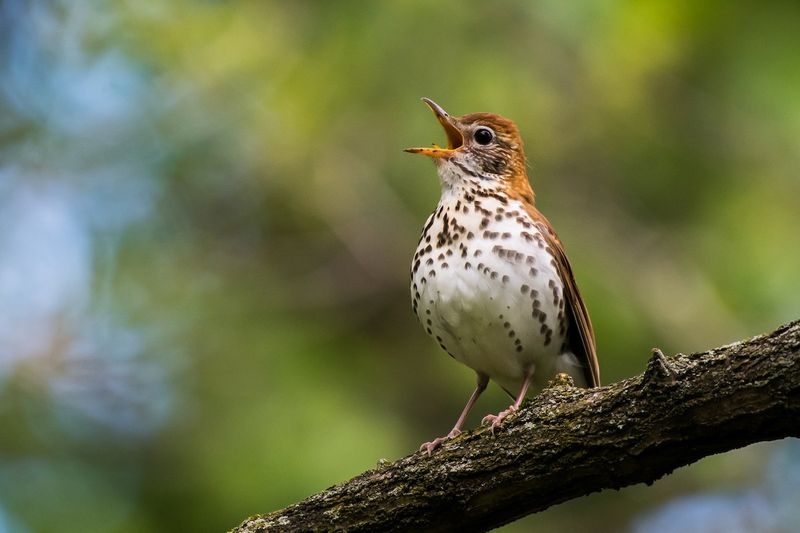
The Wood Thrush enchants with its hauntingly beautiful song, a flute-like melody that resonates through the forest. This medium-sized bird, with its warm brown upperparts and spotted breast, is a master of camouflage. Arriving from Central America, it seeks the dense understory of deciduous forests for breeding. Its song is often considered one of the most beautiful in North America, providing a serene soundtrack to summer hikes. The elusive nature and melodious voice of the Wood Thrush make it a prized find for bird enthusiasts.
Black-and-white Warbler
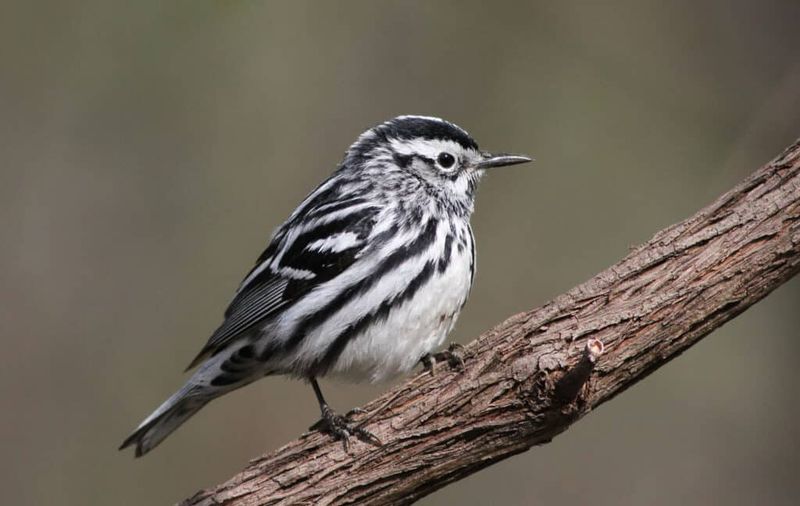
The Black-and-white Warbler is like a living piece of art, with its bold black and white stripes resembling a zebra’s coat. Unlike most warblers, this bird forages on tree trunks and branches, akin to a nuthatch. It migrates from Central America to North America, filling forests with its high-pitched, squeaky song. Their unique foraging style and striking appearance make them stand out among other warblers. Observing one as it spirals up a tree trunk is a delightful experience for bird watchers. This warbler’s monochrome beauty is truly captivating.
Eastern Kingbird
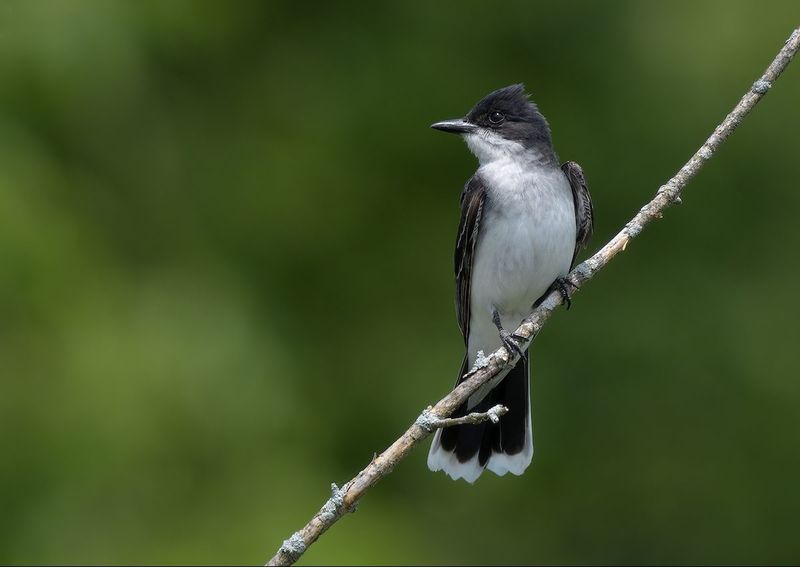
The Eastern Kingbird, with its bold behavior and striking black and white plumage, is a common sight across open fields and farmlands. Known for its aggressive nature, it fearlessly defends its territory against larger birds. These birds migrate from South America to North America, where they can be seen perched conspicuously, scanning for insects. Their aerial acrobatics as they catch insects in flight are a testament to their agility. The Eastern Kingbird’s unmistakable presence and dynamic behavior make it a fascinating subject for bird enthusiasts.
Yellow Warbler
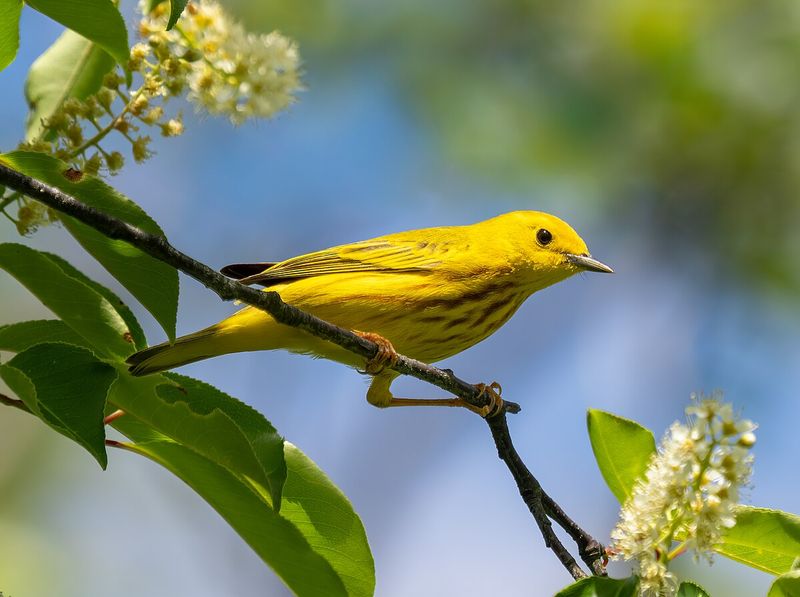
The Yellow Warbler is synonymous with sunshine, its bright yellow plumage a cheerful sight along streams and marshes. This small bird migrates from Central America to North America, arriving just as the landscape bursts into color. Its sweet, whistled song is a familiar sound in wetlands and wooded edges. Often seen flitting among willows and alders, the Yellow Warbler is a joy to observe as it hunts for insects. Its sunny demeanor and vibrant color make it a favorite among bird watchers and a true herald of spring.
Common Nighthawk
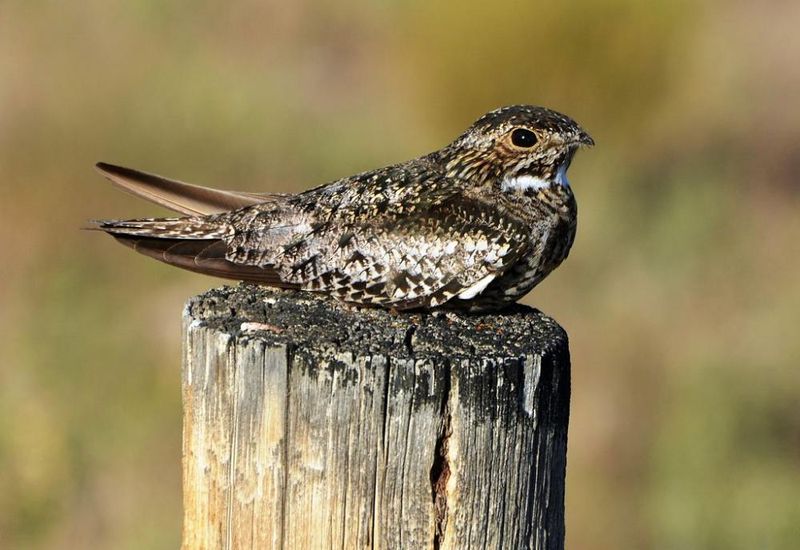
The Common Nighthawk is a master of the twilight skies, with its erratic flight patterns and haunting calls. These birds migrate from South America to North American cities and countryside, where they can be seen swooping through the air at dusk. Their cryptic plumage blends seamlessly with open landscapes, making them difficult to spot during the day. As night falls, their distinctive “peent” calls fill the air. The nighthawk’s aerial displays are mesmerizing, a dance of survival as they hunt for insects. Their presence is a hallmark of summer evenings.

